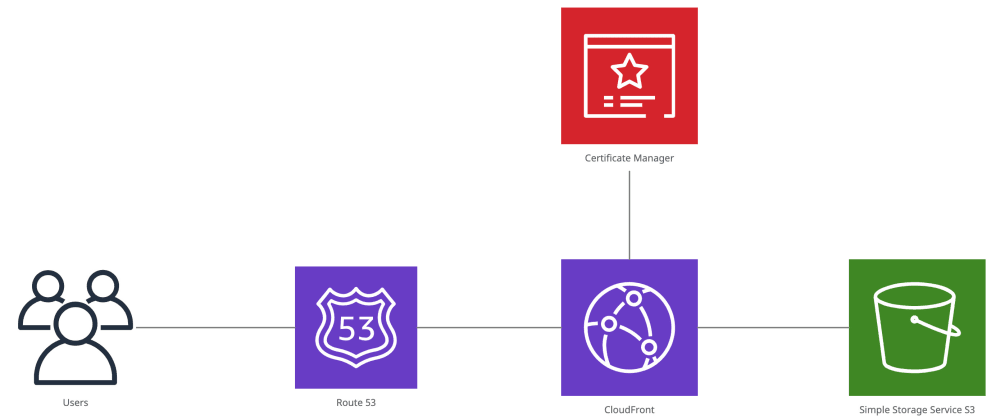

Host a static website on AWS under a minute with Terraform
source link: https://dev.to/aws-builders/host-a-static-website-on-aws-under-a-minute-with-terraform-3hmd
Go to the source link to view the article. You can view the picture content, updated content and better typesetting reading experience. If the link is broken, please click the button below to view the snapshot at that time.


Host a static website on AWS under a minute with Terraform
If you have a static website and you want a simple solution, S3 and Cloudfront are great choices. S3 with Cloudfront secure, scalable way to host static content. Also, we will get an SSL certificate for our domain and it will be free.
Prerequisites
Before the deployment of this terraform module, make sure your hosted zone exists in Route 53 and move your domain to Route53 by changing NS records on your DNS provider.
We will use 4 AWS Services;
S3 - Storing website files (HTML, CSS, JavaScript)
Cloudfront - CDN
Certificate Manager - SSL Certificate
Route 53 - DNS records
Since we are using Cloudfront we don't need the public bucket, so we will create a private S3 bucket. We will use OAI (Origin Access Identity) settings when we create Cloudfront. This means that only our Cloudfront distribution can access and read the files in our S3 bucket. Also, we will create an SSL certificate from Certificate Manager and Cloudfront redirect all HTTP traffic to HTTPS.
First clone the repository
git clone [email protected]:emreoztoprak/terraform-aws-s3-cloudfront-acm.git
Change these two variables in the terraform.tfvars file.
SiteTags = "Example" (Tag value of the resources.)
domainName = "example.com"
You can now run this module when you change the variables.
terraform init
terraform plan
terrafom apply --auto-approve
After the deployment is completed upload your website files to in S3 Bucket. I configured DefaultRootObject as index.html. Basically, when users access your root URL they will see index.html file.
I just uploaded a simple HTML file.
Congratulations. You made it. :)
Hope you find this tutorial helpful!
Recommend
About Joyk
Aggregate valuable and interesting links.
Joyk means Joy of geeK